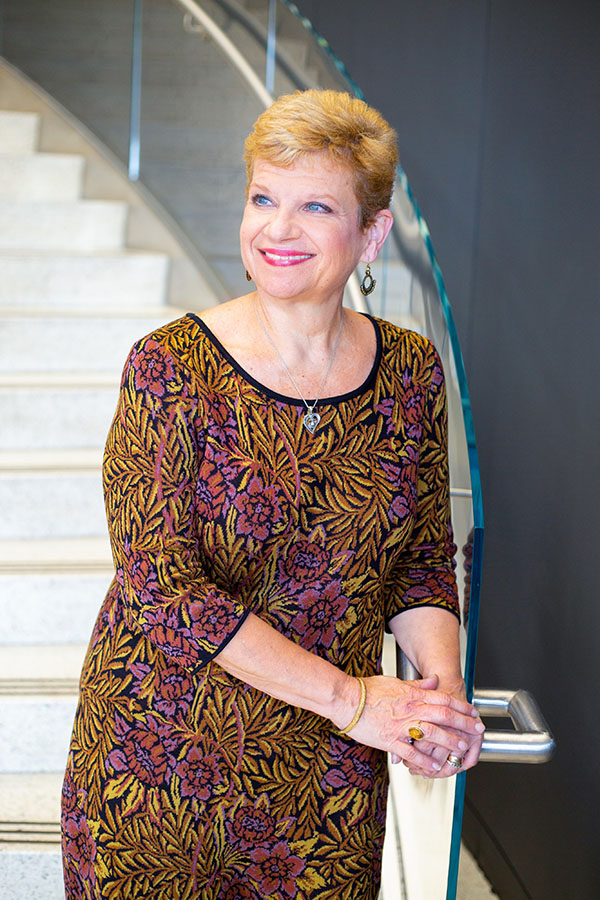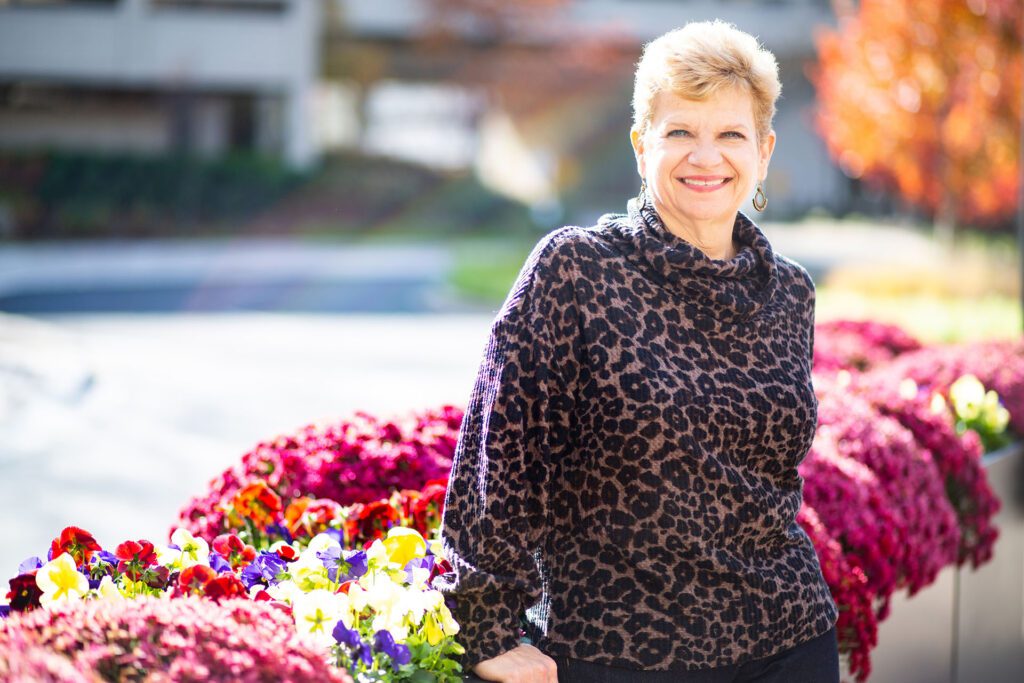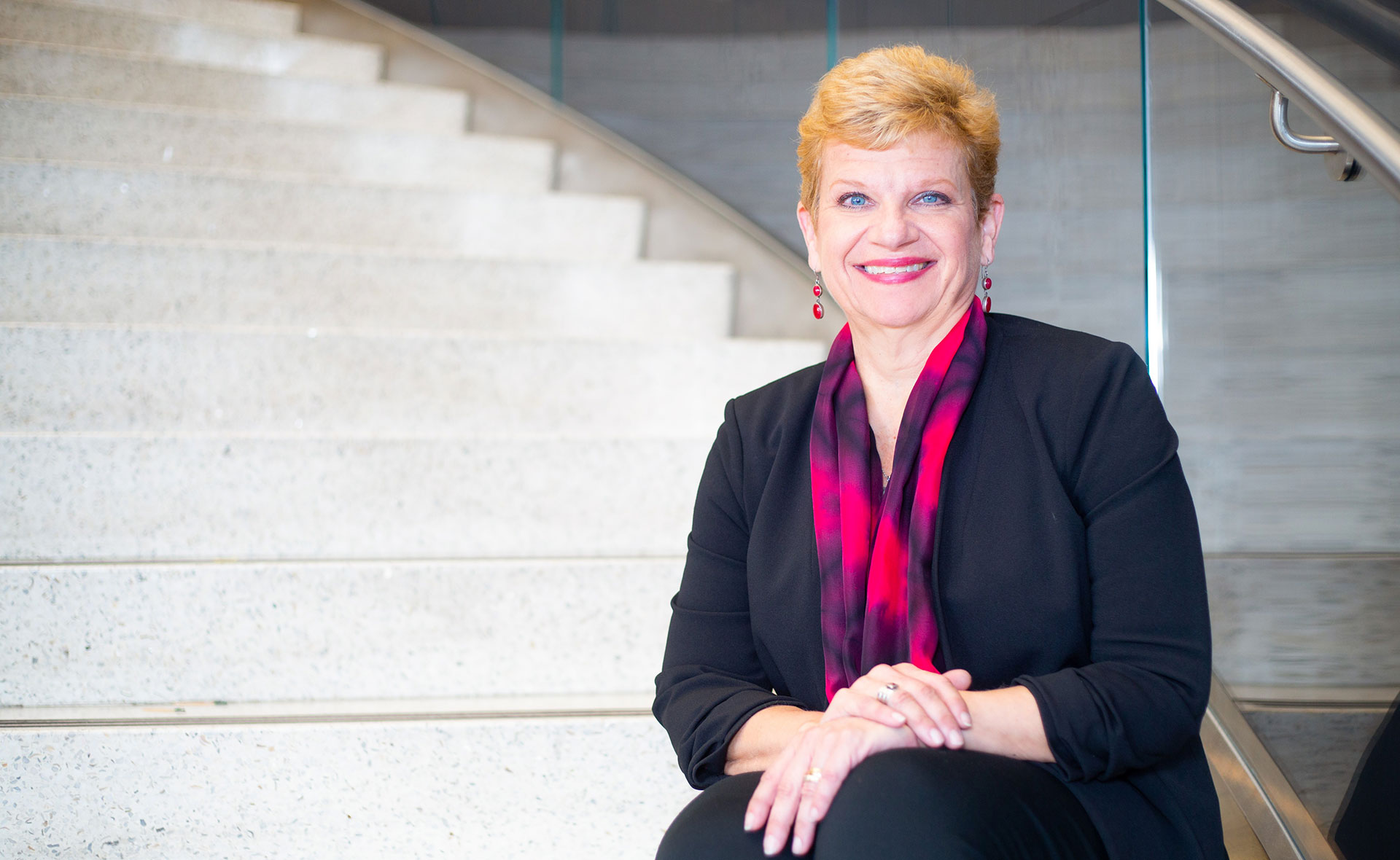The pandemic transformed many CLOs into corporate sherpas, guiding employees as they moved to remote work and providing them with newly virtual content to ensure they had the skills and support to remain productive and engaged.
Nobody stepped into this role with greater tenacity than Lou Tedrick, VP of global learning & development at Verizon, the multinational telecommunications company headquartered in New York. She saw it as a chance to reimagine corporate learning and how it can be used to meet the constantly evolving needs of the workforce and the business. “There is no better time to be in HR and L&D than right now,” Tedrick declares. “We have an opportunity to be at the table and to influence how companies shape their human capital strategies for the future.”
Her innovative approach to training and relentless commitment to the needs of her learners is why Chief Learning Officer named Tedrick its 2021 CLO of the Year.
30 days
Within days of the pandemic’s start, Tedrick was working round the clock to convert all of Verizon’s training to virtual.
At the time, 85 percent of the content serving more than 130,000 employees was instructor-led. But Tedrick was unphased. A few years prior her team had created a virtual training curriculum to support a new group of home-based customer service agents. They used that curriculum as the model to reinvent all customer service training as well as all other curriculum conversions. “The team scaled that curriculum and we got them trained,” Tedrick says.
At the same time, the entire learning team got its own education on virtual training platforms and how they could use them to produce compelling content for a virtual audience. Then they converted all of the content that learners and leaders needed to thrive in a virtual environment.
“Within 30 days all critical training had been converted,” Tedrick says. “As soon as one course was up, we moved to the next one.”
The company had also recently rolled out Degreed as its new learning experience platform, and Tedrick ramped up its use by creating relevant learning paths and encouraging employees to explore effective remote working, health and wellness, and racial justice content.
“She didn’t just put everything on Zoom. She created learning plans for every segment of the company based on their needs,” says Sam Hammock, EVP & Chief Human Resources Officer at Verizon. Her ability to adapt the entire Verizon learning environment in a matter of weeks is one of many examples of how Tedrick uses her innovative thinking and influence as a leader to meet the needs of every learner. “She is one of the formative thought leaders in this space, and we are immensely lucky to have her,” Hammock says.
From fashion designer to CLO

Tedrick didn’t plan to become the CLO of a $128 billion Fortune 100 company. She initially dreamed of becoming a fashion designer, and even got a masters degree in fashion merchandising. She taught fashion merchandising at a small college, but eventually discovered that the world of academia moved a little too slow for her. At the same time, she discovered her passion for teaching could be transferable to corporate training, and the CHRO of Limited (the former women’s clothing retailer) encouraged her to go back to school to get an HR degree. “It was the only way I could work in corporate learning,” Tedrick says.
So she returned to her alma mater, The Ohio State University, to work as an academic adviser while getting her second master’s degree in HR through night school.
After working for five years at CompuServe in a number of training and HR roles, she landed a job at AirTouch Cellular, an early wireless service provider. AirTouch was shortly acquired by Vodafone, which later merged with Bell Atlantic to become Verizon in 2000. Tedrick stuck around through all of it, rising through the ranks and taking on new leadership roles with every transition.
When her boss quit shortly after the Verizon merger, she was given her job, overseeing 45 people running wireless network, sales and leadership training and learning technology, and once again her strengths as an agile and innovative learning leader won her a lot of notice.
“Over the next few years the COO and VP-HR kept asking me to take on more stuff,” she says. She always said yes.
“I’m always asking myself, am I still true to the learner? Am I delivering what’s needed by the business?
”
Tedrick eventually took over implementation of the new company-wide learning management system and was given authority over wireless field sales and customer service training.
In the beginning, Verizon operated as a federated training organization, with each department taking responsibility for its own staff and training. But by 2016, Tedrick was given domain over all of the company’s training.
“Throughout my career it never occurred to me not to take things on when someone asked,” she laughs. “I was always raising my hand to do more.”
Lou the leader
Pete Beck, Verizon’s director of global learning technology, has worked with Tedrick for more than 20 years and marvels at her ability to see opportunities where others might only see challenges. “Lou is brilliant. She has the strength and courage to do things that others see as unconventional.”
He points to her adoption of virtual reality training to teach store staff how to respond in the event of an armed robbery. “It’s not a simulation you can role play,” he says. But it wasn’t a cheap experiment. “She had the courage to fund it, and it was a huge success.”
She also supported the use of augmented reality glasses for field reps so they could access “how to” videos and guidance while working on telephone poles, as well as a mock store at the company’s conference center where sales reps in training interact with real customers. “She’s really focused on how to get learning as close to the learner as possible so it makes the biggest impact,” Beck says.
“Lou is brilliant. She has the strength and courage to do things that others see as unconventional.
”
However, her willingness to take on new challenges is only part of what makes Tedrick a great learning leader. Her enduring commitment to putting the learner at the center of every decision also makes her stand out.
Tedrick notes that she started her career working with learners in the field and at the retail level. “I never wanted to lose perspective on what that feels like,” she says. Those early experiences made her realize how important it is to maintain that connection with the learners and to never become the CLO who hands down directives from corporate.
It is one of things that Verizon’s leadership team loves about her. “She brings a customer-centric approach to strategy,” Hammock says. No matter what problem she is trying to address, she always brings it back to what learners need to drive better business results. “She talks about learning, but she leads from the business.”
Voice from the past
To maintain that connection, early in her career at Verizon, Tedrick recorded a voicemail reminding herself never to forget the field and brand perspective when making decisions. Then she set up her voicemail system to send the message back to her every 90 days. “It was a reminder to hold myself accountable and to be true to myself,” she says.
When the voicemail system was replaced several years later the message was lost, but she never forgot it. “I’m always asking myself, am I still true to the learner? Am I delivering what’s needed by the business?”
That self reflection helps to ground her as she seeks the connection between meeting the needs of learners and driving business goals. If a department head asks for a training solution but the business connection isn’t there, she won’t do it. “Our goals are set by what we are trying to make happen,” she explains. “It’s how we get support and win the trust of the business.”

Data-driven CLO
To prove those connections Tedrick measures everything, working with Verizon’s operations and data analytics teams to establish scorecards and metrics that track training impact against business results. That data becomes a powerful tool in conversations about when and whether to invest in training.
She notes that if a department is spending a lot of money to train a team, and it’s keeping them off the job, they want proof that it will pay off. “If we can measure ROI based on pre- and post-training financial impact, we can be sure they are getting their money’s worth,” she says.
For example, every group of new hires goes through job-specific training as part of the onboarding process, then her team measures their performance against established benchmarks at 30, 60, 90 and 120 days. “If performance dips, we know to go back and figure out what’s contributing to that,” she says.
While the problem might be that the training has fallen short, it also helps them uncover other performance issues related to leadership, product issues, technology, team dynamic or individual fit. “It gives us good intel to isolate problems and solve them.”
It also helps her convince business leaders to address the real issues at hand. “When you can provide data, it stops being an ‘us versus them’ discussion and becomes about how to best meet a business goal together.”
This data-driven approach has helped Tedrick justify transitioning courses from in-person to virtual, to expand curriculum where new hires were struggling to ramp up and to condense courses when the data proves some content isn’t adding value. “It influences every aspect of our technology and people roadmap.”
It has also won her accolades and access across the organization. “The business understands that if they involve us early and allow us to deeply understand their operations, we can help them improve,” Tedrick says.
Upskilling for the future
Over the next three to five years, that improvement will come through purposefully and continuously, skilling employees so they can grow in their current positions or evolve into new roles. To accelerate this transition, Tedrick’s team plans to support its traditional training by building a peer-to-peer knowledge sharing platform and encouraging more mentoring and coaching to make it easier for all employees to share their knowledge in thoughtful ways.
“All of it ties back to talent acquisition and skill building,” says Beck. “Lou believes that if we can upskill high-value talent, then we can bring in new talent to compliment the skills we already have.”
It’s all part of their broader workforce planning strategy to support the company’s business strategy in the years to come.
CLOs today are facing constant pressure to deliver consumer-like experiences while demonstrating business value from their investment. Tedrick’s combination of innovative thinking and servant leadership methods make her the ideal leader for these times. “Never underestimate the power of a servant leader to inspire a team,” Hammock says. “It’s what makes Lou so special and such a trusted adviser to the business.”















